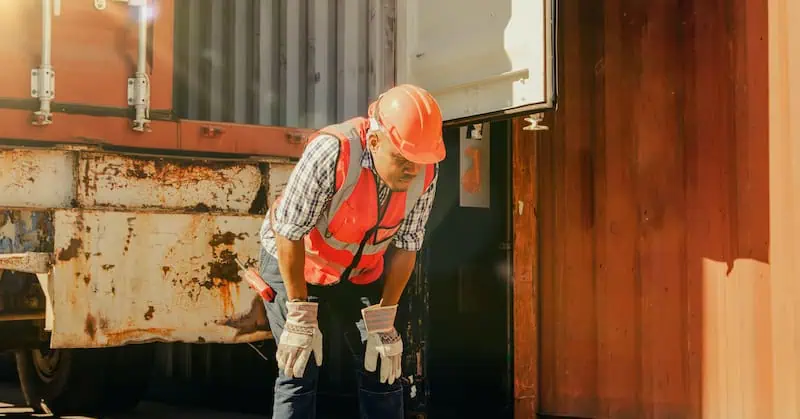Prioritizing Heat Stress Safety

Across the U.S., heat remains the leading cause of weather-related fatalities, putting those working outdoors or in non-climate-controlled indoor spaces directly at risk. Early forecasts suggest that the summer of 2025 will be above the historical average, just after 2024 was named the hottest year on record in over a century. As extreme heat becomes more frequent and more dangerous, the threat to worker health and safety is only growing.
Rising temperatures, and the heat-related illnesses that come with them, pose a challenge to facility leaders who must protect on-site workers from the danger of high heat while also keeping operations running smoothly. That’s why heat readiness needs to become a part of everyday operations. Proactive measures, such as modifying work environments when possible, improving training, and using supportive technology can reduce risk and keep workers safe.
Understanding Heat Stress Risks
Heat stress is a broad term, which can cause it to be misunderstood. Some workers might assume they’re only experiencing heat stress when severe symptoms set in, but in reality, heat stress covers a range of conditions that occur when the body can’t regulate its temperature. Exposure to high heat, especially when paired with physical activity, can lead to dehydration, heat cramps, heat exhaustion, or in severe cases, heat stroke. Without quick intervention, heat stroke can be fatal, which is why it’s important for facilities to have awareness and response protocols in place year round.
The dangers for workers usually start at the beginning of the season, as studies show that 50 to 70 percent of outdoor heat-related fatalities happen within the first few days of working in high temperatures, before the body has a chance to adjust. But it’s not just a summer issue: workers in warmer climates may face high temperatures year-round, and indoor workers in poorly ventilated or high-heat environments are also at risk. Even milder forms of heat stress can affect how workers move, think, and react, increasing the chance of missteps or errors that can cause ripple effects across whole teams. Reducing those odds starts with how work is planned, how environments are managed, and how well teams are equipped to respond.
Modifying The Work Environment
One of the most effective ways facility managers can reduce risk is by modifying workspaces to help workers better manage their core temperature. For outdoor work spaces, that could mean setting up shaded rest areas or moving break stations closer to where work is happening. For indoor environments, where permanent climate control might be limited or inconsistent, ventilation systems, localized air conditioning units, or spot cooling solutions can make a noticeable difference.
Even small changes like adding fans or misting systems to specific work zones can prevent overheating. And when extreme temperatures hit, facility managers should work with operations teams to adjust schedules, increase hydration breaks, and review how job tasks are distributed across the day to avoid excessive strain during peak heat hours.
Training And Education
Training and education need to be top of mind, as they give employees the knowledge to recognize when to stop, rest, or alert a supervisor if heat becomes a danger. That includes being able to spot early signs of heat-related illness, such as dizziness, nausea, or confusion. Workers also need clarity on the full range of heat stress conditions, from mild issues like heat rash to serious ones like heat stroke, since each requires a different response.
Employers can reinforce this knowledge through online safety modules, signage in high-heat areas, and regular check-ins when temperatures rise. Online safety training that aligns with OSHA guidelines can also address common risks. Making this training always available to workers and recirculating it during hotter periods can normalize reporting and create a culture where workers feel empowered to speak up about discomfort.

Technology’s Impact
Technology plays a key role in keeping workers safe. As it keeps advancing, there are more tools available than ever to help teams manage heat stress on the job. Wearables that monitor body temperature and detect early signs of heat strain are becoming more widely used, giving both workers and supervisors a heads-up when conditions start to become unsafe. These alerts provide a chance to intervene early before symptoms become more serious.
There are also devices designed to help workers stay cool throughout the day. Cooling bands or vests with evaporative technology can lower body temperature and provide much-needed relief in hot conditions. These tools aren’t a replacement for other safety measures, but add an extra layer of protection.
Staying On Top Of Regulations
Future-proofing heat stress safety approaches means staying ahead of changes and keeping on top of evolving regulations. At the federal level, OSHA is moving forward with a proposed rule focused on preventing heat-related illness, which would add new requirements for how employers plan for and respond to heat.
Even in areas where these laws aren’t yet in effect, facility leaders have a responsibility to assess their existing policies and consider if their current approach is (or isn’t) keeping up. Tracking these developments and preparing for what’s coming can help to avoid compliance issues and put the right protections in place well before temperatures rise.
Heat Stress: The Way Forward
To keep their teams safe from heat stress, employers need to incorporate operational changes that focus on both environmental controls and worker education. Beyond improving work environments, training, and technology use, actions like reassessing how heat affects different parts of a building or outdoor site, upgrading ventilation, or building in more flexible scheduling during hotter periods show workers that their safety comes first.
Addressing heat stress is about much more than just reacting to the hottest days. It’s about proactively having an education and operational safety plan in place, and supplementing it with the right tools before things heat up. The goal is to create a work environment where heat stress risks are minimized, and where everyone is informed and prepared to recognize and respond to signs of heat-related illness.
By Clare Epstein
Clare Epstein serves as General Manager, Commercial at Vector Solutions, bringing more than 20 years of leadership experience working with safety training and technology solutions. As general manager, Epstein is responsible for driving strategy, execution and growth for Vector’s commercial market segment which serves customers across manufacturing, oil and gas, property management, engineering and construction. She first came to Vector after the company’s acquisition of IndustrySafe, a leading provider of EHS software, where she was the Chief Operating Officer. Her experience also includes leadership roles at Civis Analytics and theEMPLOYEEapp. Clare holds a Master of City Planning from the Massachusetts Institute of Technology and a Bachelor of Urban Studies from the University of Pennsylvania.
Read more news and insights about Workplace Safety on Facility Executive.

